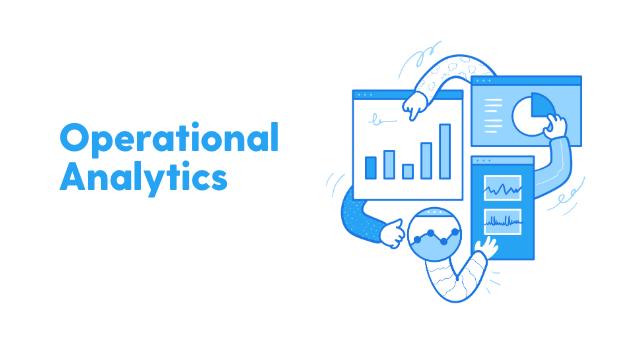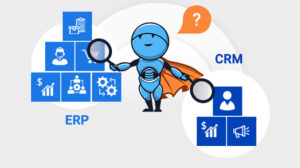Operational analytics is a specific type of business analytics focused on improving the efficiency and effectiveness of an organization’s day-to-day operations. While there are many different types of analytics, such as customer analytics, marketing analytics, and financial analytics, operational analytics is distinct in that it primarily deals with the internal processes and systems that drive the functioning of a business.
The goal of operational analytics is to optimize operations, reduce costs, improve productivity, and ultimately enhance overall performance. This is achieved by analyzing data from various sources, including sensors, databases, and transaction systems, to provide actionable insights and recommendations for process improvement.
Applications of Operational Analytics
Here are a few ways operational analytics can impact different business functions:
| Business Function | Data | Metrics | Use-case |
| Supply Chain | Order history, shipping data, supplier performance metrics | On-time delivery rate, supplier lead time | Optimize supply chain by analyzing supplier performance and reducing lead times to improve customer satisfaction |
| Inventory Management | Stock levels, sales data, seasonal trends, product attributes | Inventory turnover ratio, stockout rate, carrying cost | Forecast demand and optimize inventory levels to minimize stockouts, reduce carrying costs, and maximize sales |
| Quality Control | Defect rates, product returns, customer feedback | Defect rate, return rate | Identify root causes of product defects and implement process improvements to enhance product quality and customer satisfaction |
| Workforce Management | Employee performance data, schedules, skillsets | Productivity, employee utilization, overtime costs | Optimize workforce scheduling, identify skill gaps, and improve productivity to ensure efficient resource allocation |
| Sales Optimization | Sales data, customer demographics, order history | Average order value, conversion rate, customer lifetime value | Segment customers, tailor sales strategies and better forecasting, and optimize pricing to increase revenue and customer retention |
| Marketing Optimization | Campaign data, channel performance, customer interactions | Return on ad spend, customer acquisition cost, click-through rate | Measure marketing effectiveness, optimize ad spend, and refine marketing strategies based on customer preferences |
| Customer Experience | Customer behavior, feedback, support interactions | Customer satisfaction score, Net Promoter Score, customer churn rate | Analyze customer data to identify pain points, improve customer satisfaction, and increase loyalty and retention |
| Predictive Maintenance | Sensor data, maintenance history, equipment usage | Equipment downtime, maintenance costs, time to failure | Use data to predict equipment failures and maintenance needs, reduce downtime, and extend the lifespan of assets |
Best Practices & Case Study for Operational Analytics
Best Practices for Implementing Operational Analytics explained by an eCommerce case study:
Case Study: An e-commerce company specializing in personalized products sought to improve its overall performance by leveraging operational analytics. The company implemented the following best practices, leading to increased revenue and customer satisfaction:
Investing in the modern data stack:
- The company invested in cloud-based data storage and analytics tools, allowing for real-time insights, scalability, and flexibility.
- They also adopted advanced analytics techniques, such as machine learning, to improve personalization and optimize marketing efforts.
A skilled analytics team:
- The eCommerce company hired a fractional data team of skilled data analysts, engineers, and scientists to manage and analyze data effectively.
- The team developed custom algorithms to optimize pricing, product recommendations, and inventory management.
Ensuring data privacy and security:
- The company implemented robust data privacy and security measures, including data encryption and strict access controls.
- They regularly conducted security audits and complied with data protection regulations, ensuring customer trust and loyalty.
Continuously evaluating and refining analytics processes:
- The company established a process to regularly evaluate and refine its analytics methodologies, ensuring their effectiveness and alignment with business objectives.
- They adapted to changing market conditions and customer preferences, leading to continuous improvements in performance and customer satisfaction.
Objective Achieved: By implementing these best practices, the e-commerce company saw significant improvements in revenue growth, customer retention, and overall operational efficiency. The data-driven approach enabled them to make more informed decisions, optimize their processes, and ultimately enhance their competitive advantage in the market.
Key Components of Operational Analytics
Data Collection and Integration
Importance of diverse and accurate data sources:
Diverse and accurate data sources are critical for operational analytics to provide meaningful and actionable insights. They ensure that the analysis is based on a comprehensive understanding of the organization’s operations and the factors affecting its performance. Utilizing a variety of data sources, such as transactional data, sensor data, and customer interactions, helps businesses to capture a holistic view of their operations and identify patterns that may not be apparent when analyzing data from a single source.
Data integration techniques:
Data integration involves consolidating data from multiple sources into a unified and consistent format, making it easier to analyze and derive insights. Some popular data integration techniques include:
- ETL (Extract, Transform, Load): Extracting data from multiple sources, transforming it into a common format, and loading it into a central repository, such as a data warehouse.
- Data fusion: Combining data from multiple sources to create a more complete and accurate representation of the information.
- API integration: Using APIs (Application Programming Interfaces) to connect and exchange data between different systems or applications.
Data Processing and Transformation
Data cleaning and normalization:
Data cleaning involves identifying and correcting errors, inconsistencies, and inaccuracies in the data, while normalization is the process of standardizing the data to make it easier to compare and analyze. These processes ensure that the data used for operational analytics is reliable, accurate, and consistent.
Feature engineering:
Feature engineering is the process of creating new variables or features from raw data to improve the performance of analytical models. This can involve techniques such as aggregation, transformation, and encoding of variables. Feature engineering helps uncover hidden patterns in the data and enhances the effectiveness of the analytics process.
Analytical Models and Algorithms
- Descriptive analytics: Descriptive analytics focuses on summarizing historical data to understand past trends and performance. Techniques include data summarization, aggregation, and visualization.
- Diagnostic analytics: Diagnostic analytics seeks to identify the root causes of specific events or outcomes by examining the relationships between variables. Techniques include correlation analysis, regression analysis, and anomaly detection.
- Predictive analytics: Predictive analytics uses historical data to forecast future events or trends. Techniques include time series analysis, machine learning algorithms, and statistical modeling.
- Prescriptive analytics: Prescriptive analytics provides recommendations for optimizing business processes and achieving desired outcomes. Techniques include optimization algorithms, simulation modeling, and decision analysis.
Data Visualization and Reporting
- Dashboard design: Dashboards are visual representations of key metrics and data, designed to provide a quick and easy way to monitor performance and make data-driven decisions. Effective dashboard design should be intuitive, customizable, and interactive, allowing users to explore data and gain insights easily.
- Key Performance Indicators (KPIs): KPIs are quantifiable metrics that help organizations track their progress towards specific goals or objectives. In the context of operational analytics, KPIs are used to monitor the efficiency and effectiveness of business processes, enabling organizations to identify areas for improvement and measure the impact of their optimization efforts.
Conclusion
In conclusion, operational analytics is the key to transforming raw data into actionable insights that drive business growth and operational efficiency. Transform data into actionable insights with Saras Analytics as your trusted data partner. Let us manage your data operations and provide a fractional full-stack data team tailored to your needs for operational analytics. Don’t miss the opportunity to optimize your business processes, make data-driven decisions, and unlock growth potential. Reach out to us today and take the first step towards operational excellence.













